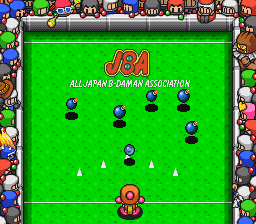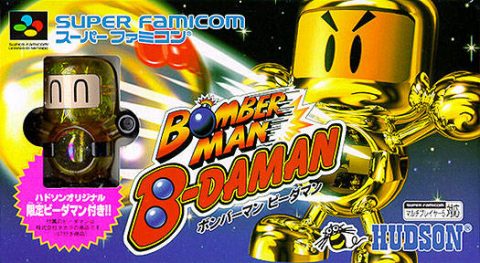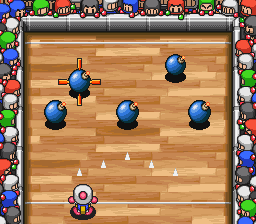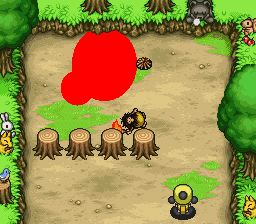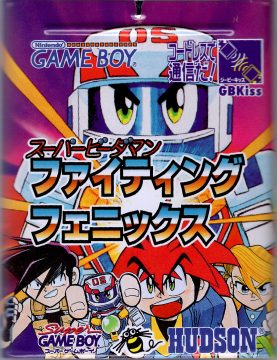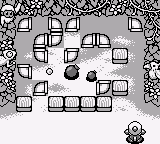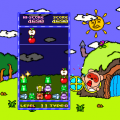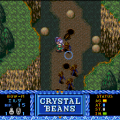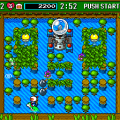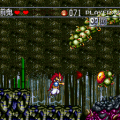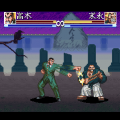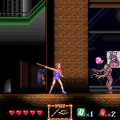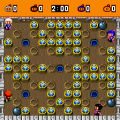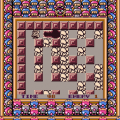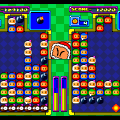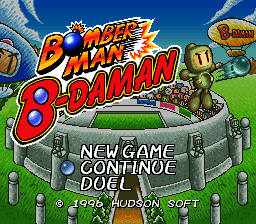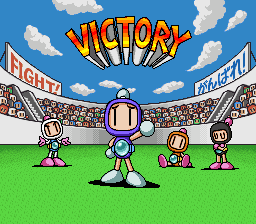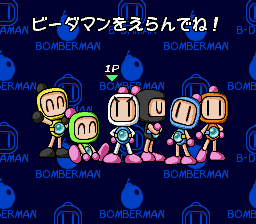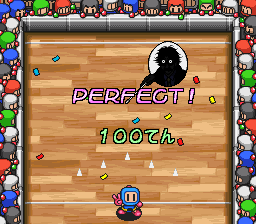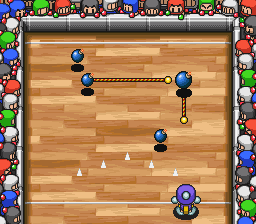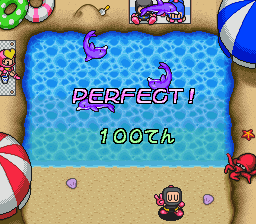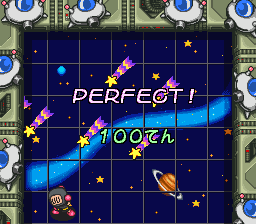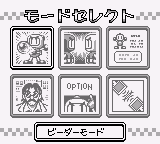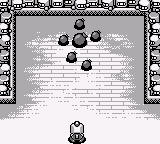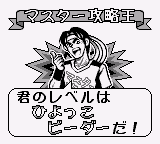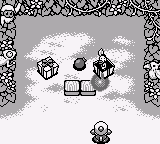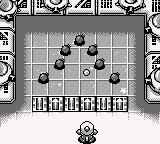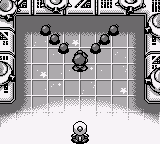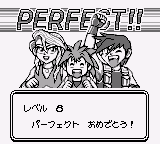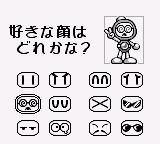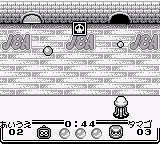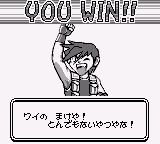- Bomberman Series Introduction / Bomberman (1983)
- 3-D Bomberman
- Bomberman (1985)
- RoboWarrior
- Atomic Punk
- Bomberman (1990)
- Atomic Punk (Arcade)
- Bomberman II
- New Atomic Punk: Global Quest
- Bomberman ’93
- Super Bomberman
- Hi-Ten Bomberman / Hi-Ten Chara Bomb
- Bomberman ’94 / Mega Bomberman
- Super Bomberman 2
- Super Bomberman 3
- Wario Blast: Featuring Bomberman
- Bomberman GB 2
- Bomberman: Panic Bomber
- Super Bomberman 4
- Saturn Bomberman
- Bomberman GB 3
- Bomberman B-Daman
- Super Bomberman 5
- Atomic Bomberman
- Neo Bomberman
- Amazing Bomberman
- Bomberman 64
- Saturn Bomberman Fight!!
- Pocket Bomberman
- Super Bomberman R
- Super Bomberman R Online
Thanks to the ever-increasing popularity of Bomberman throughout the early 90s, it was only natural that Hudson would want to invest in merchandising the franchise, and Takara seized the opportunity in a way that would go on to be lucrative for years. After striking a deal to use Bomberman as its basis and with the input of Hudson Soft’s Shigeki Fujiwara, B-Daman, a line of marble-shooting toys was born. It may sound simple nowadays, but the idea was successful enough to warrant anime, manga, additional toy lines, and card games over the years. The concept itself was also expanded upon with customizable parts that could be used to create B-Daman toys with different specialties and multiple rulesets that determined whether you’d be shooting at your opponent or something else. Until the Battle B-Daman line was brought westward in 2005 courtesy of Hasbro alongside the anime of the same name, the series remained exclusive to East Asian countries (in “official” capacities, anyway) and the Bomberman installments tied to it remained exclusive as well. Bomberman B-Daman was both the first B-Daman game and the first of them to prominently focus on the Bombers, but later entries would have fully distinct identities separate from the character that served as its foundation.
The main mode of Bomberman B-Daman has you playing through ten sets of ten levels each in order to get the best score you can muster. Each level presents a formation of bombs for you to try and destroy alongside any hazards or environmental gimmicks that may be present to make things more interesting. You only get one marble to destroy them all, so the key is to shoot the right bomb that’ll cause a chain reaction and blow up the other ones. You get two tries per level to detonate as many of the bombs as possible and are rewarded up to 100 points depending on how well you do. After those two tries, regardless of your performance, you’ll be ushered off to the next stage, so there’s no way to get stuck and you won’t be forced to repeat anything you’ve already done. This does make it trickier to replay levels you want to score better on since you’ll have to work through the previous levels again to get back to the one you want to retry, but it creates a casual, welcoming environment that’s well suited for a game intended for kids interested in the B-Daman toys. Inexperienced players will get to see every level without encountering a brick wall and skilled players have plenty of levels to go back and try to master for unlockables like alternate title screens.
Playing Bomberman B-Daman is a simple task mechanically, but one that becomes trickier than it looks quite quickly. By default, Bomberman will shoot a marble forward once you press the button, but if you utilize the L and R buttons, you can charge up a faster shot or make it curve to the left or right, allowing you to get around obstacles, hit moving objects within a short timeframe, or approach puzzles from a different angle. That’s all there is to the fundamentals, but it’s the level design and various hazards that make Bomberman B-Daman more varied and interesting. Some things like redirection arrows will be familiar to those with previous Bomberman experience, but B-Daman gets creative in ways exclusive to its particular brand of gameplay, including things like cavemen holding torches that can be tipped over to ignite bombs, other Bombers performing activities like skateboarding and soccer goalie duty that happen to get in your way, and aquatic life that patrol stages and block your shots at the absolute worst times. The bombs themselves can sometimes be the biggest problem of all between their varying movement speeds and sizes that determine their blast radiuses, leaving little room for error.These tricks can all be sudden and punishing, but the game lingers on each theme for 20 levels, giving the player enough time to come to grips with it all. This could arguably be too much time, even, but things generally change up right as you’re getting tired of it and the experience ends up with better pacing than its generic looking first theme initially signals.
Bomberman B-Daman offers several other modes, some of which are more elaborate than others. The expected multiplayer options are here, but there are two different types that shake out in entirely different ways. The 1v1 mode has players competing via the stages in the main game to see who can get the best score and the four player mode is closer to something like Atari’s Warlordsand has players trying to shoot marbles past each other’s defenses while simultaneously being vulnerable from all directions. This is a very clever adaptation of the dynamic of the series’ conventional multiplayer because all of the classic trademarks of Bomberman chaos are feasible if you’ve got the right group for it; you can forge alliances, gang up on other players, or do your best to survive and hope the others lose more points than you do. The strong concept of the mode is a bit let down by a lack of options, though, since there’s only one stage and little in the way of power-ups to significantly change the game.
The B-Daman toys are small and lend themselves well to customization, something that the series would lean into harder in the future as it establishes its own non-Bomberman identity, so it’s a welcome inclusion that this game would offer some neat ways to recreate that with the in-game Bombers. There’s an edit mode that lets you change the color and facial expression of any of the default Bombers and there’s another mode that lets you equip your Bomber with accessories that enable new gameplay options like a visor that indicates the ideal bomb to target for the highest score. A level creator is also an option, which allows you to create a single level for yourself or others to play. You can determine the size, speed, and number of the bombs placed, but you only get one possible environment (the first one) and no option to add environmental hazards, so the stages you can make end up feeling quite limited. Still, such a bounty of options is welcome and serves to give the game multiple means of exploring its easy to learn but challenging to master mechanics.
Bomberman B-Daman is a simple but successful adaptation of a simple concept, making it easy to get into but also something that might not hold the attention of those not already into B-Daman. Future B-Daman titles would become significantly more complex, offering more ways to play, a wider variety of characters and visuals, and proper storylines to follow. As for the Bomberman-related entries specifically, multiple anime/manga series, some of which are called Bomberman B-Daman Bakugaiden and Bomberman B-Daman Bakugaiden Victory, would follow alongside two games (B-Daman Bakugaiden: Victory e no Michi and B-Daman Bakugaiden V: Final Mega Tune) that use the anime as afoundation and are firmly in the RPG camp, featuring things like collectible cards, turn-based battles, and giant robots to customize and do battle with.
Super B-Daman: Fighting Phoenix – Game Boy (1997)
A year later, the Game Boy would receive a B-Daman game that seems like a scaled down version of Bomberman B-Daman at first glance, but has several differences and additions worthy of note. As the subtitle implies, this game introduces elements beyond the Bombermen, both in terms of the B-Daman figurines used in gameplay and the characters that surround them. Through playing the game, you can unlock additional B-Daman toys to use instead of the Bombermen, including the titular Fighting Phoenix, and in the multiplayer modes, you have the option of selecting three different characters from the Super B-Daman manga/anime to use. You can choose from protagonist Tamago Tosaka, Ganma Nishibe, and Cerer. They don’t add anything to the proceedings beyond different win/lose quotes, but the additional flavor is likely something that fans of the source material would appreciate.
You once again have 100 stages to work through, but their designs differ significantly from its console predecessor, generally featuring fewer bombs to destroy and more gimmicks to differentiate stages. The environments used every 20 levels remain the same (as does their corresponding music tracks) and some of their original challenges are intact, such as the redirecting tiles in the space area and the sharks in the water area, but Super B-Daman gets a lot more creative. Some of the tricks you’ll encounter include a level that asks you to solve a math problem, levels that have you playing Rock-Paper-Scissors, a pig face that sucks in and spits out bombs, and bombs that become duds after five seconds. To accommodate the need to adapt to these surprises, you now get three tries on each level instead of two and the scoring for imperfect attempts feels more lenient.
Though Super B-Daman loses out on the multiplayer modes used in the Super Famicom title (the level editor has been removed as well), it replaces it with something that’s more robust overall. Instead of playing through the same levels or going for a four player battle royale, Super B-Daman keeps its versus mode to two players and makes them compete on separate screens. The goal here is to shoot marbles to the other side and get them past the opponent, all the while preventing the opponent from doing the same to you. Based on the level you pick, you’ll have to time your shots to go through alternating doors, pipes that regularly rearrange themselves, and walls that can be broken down to create bigger holes to shoot through. It can make for quite a hectic experience as you try to get around the environment, creative offensive openings, and block your opponent’s shots, all the while being unable to see what exactly they’re doing due to the inherent screen separation that comes with multiplayer on the Game Boy. The skull power-up even makes a return and turns the player into an octopus temporarily! Super B-Daman was also one of the games to support the “GBKiss” infrared modem technology coined by Hudson Soft and utilized in some of their cartridges, which allowed for direct connectivity between two players so that they could trade unlockable items for use in the game’s VS mode. Between all of these changes and additional features, Super B-Daman is a more varied and engaging game than its Super Famicom counterpart and is an even better introduction to the world of B-Daman video games as well.
Links
http://www.zeroichi01.co.jp/profile.html – Profile of Shigeki Fujiwara’s work that talks about the creation of B-Daman and his involvement in it
https://nectaris.tg-16.com/GB-KISS-LINK-FAQ-hudson-gameboy-nectaris.html – A FAQ about how GBKiss functionality works
